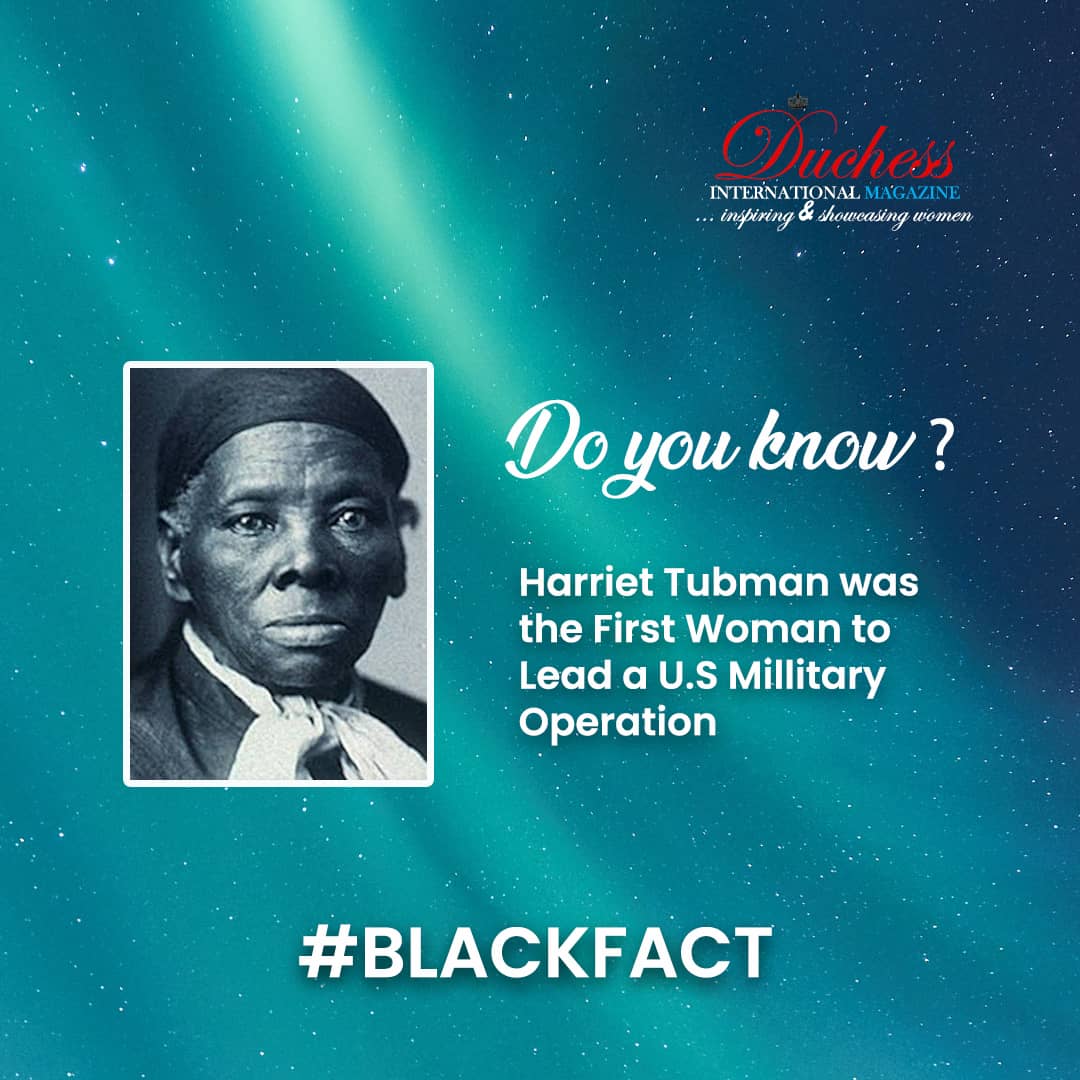Harriet Tubman is the first woman to lead a military operation. She envision the civil War and worked as a spy for the Union Army where she gather valuable information to help the Union turn the tide in the war. They so much rely on her information that the generals had no choice but to allow her to lead a military operation called the Combahee Ferry Raid.
Tubman led 150 men in a military operation that freed 750 enslaved people and wreaked havoc on Confederate troops.
Harriet Tubman was born into slavery and got married to a black man named John Tubman in 1844. Though it wasn’t legally allowed. She was ready to escape slavery in 1849, but her husband did not want to leave Maryland. She left anyway. After gaining her freedom from slavery, she then embarks on a journey to help other enslaved people find their way to freedom on the Underground Railroad. She is remembered in history for never being caught or losing a passenger on the road to freedom.
With her versatile knowledge of the South due to the Underground Railroad, she became a key informant for the North. She knew the towns and transportation routes of the South like the back of her hand. Long before GPS or reliable maps, this made her insight an invaluable tool. She will dress up as an aging woman and wander confederate streets and talk to enslaved people to gather information such as troop movement/placement and supply lines. This work made her respected so much that in 1863 she began to plan a military operation under the command of Colonel James Montgomery.
The Union officers knew that the people of the South didn’t trust them—but they did trust Harriet Tubman because her behavior and way with people were a small fraction of the assets she provided to the military. Although she was illiterate, she was able to capture intelligence with her memory.
To make the Combahee Ferry Raid a success, Tubman and 150 members of the 54th Massachusetts Regiment traveled upriver in three boats: the John Adams, Sentinel, and Harriet A. Weed. They rely on Tubman’s memory of the slaves’ locations and strategic points to prioritize collecting fleeing slaves, allowing the soldiers to also destroy Confederate property. Tubman also helped them navigate around known submarines.
At around 2:30 am on June 2, the fighters were down to two ships as the Sentinel had run aground early on in the mission. The two remaining ships split up to conduct different raids. Harriet Tubman led the men on the John Adams toward the fugitives. Once the signal was given, there was chaos: enslaved people ran everywhere as angry slave owners and rebels tried to chase down the slaves, even firing their guns at them.
As the escaped slaves ran to the shore, black troops waited in rowboats to transfer them to the ships. In the chaos, Tubman broke out into popular songs from the abolitionist movement to help calm everyone down. That night, more than 700 slaves escaped. The troops also disembarked near Field’s Point, torching farms, fields, mills, warehouses, and mansions. Overall, it was a huge success and a humiliating defeat for the Confederacy.
Even after a successful mission, Tubman was not paid for her many contributions. She solicited the government for a soldier’s pension many times and was denied because she was a woman.
After the war, she dedicated her life to helping impoverished former slaves and the elderly. She also continued to petition for recognition from the military with a military pension. She also was remarried to a Black Union soldier, Nelson Davis. After his death, Tubman would finally receive a pension. Although she often found herself in financial constraints, she was always giving her time and money.



